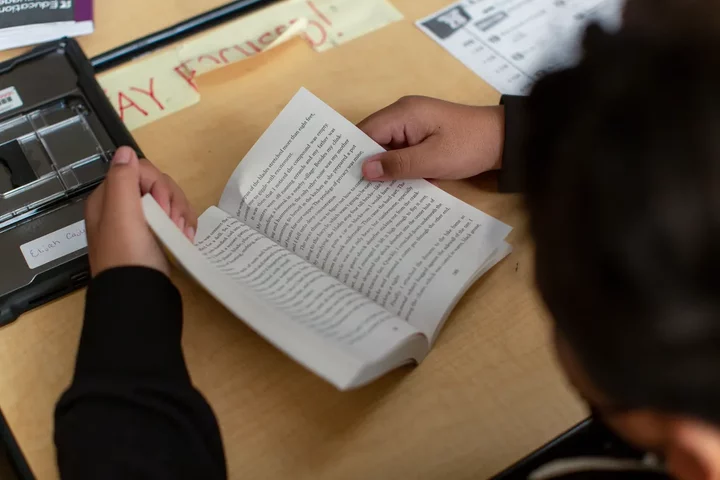Students in a sixth-grade class complete classwork at Stege Elementary School in Richmond, on Feb. 6, 2023. Photo by Shelby Knowles for CalMatters
A new Assembly bill introduced Wednesday would require all California schools to teach students to read using the “science of reading,” a phonics-based approach that research shows is a more effective way to teach literacy.
The bill, introduced by Assemblywoman Blanca Rubio, a Democrat from Baldwin Park, is backed by Marshall Tuck, who ran for California superintendent of public instruction in 2018. Tuck, formerly head of a charter school network, is now the chief executive officer of EdVoice, an education policy organization.
Many schools in California have already transitioned to the science of reading approach, but some are still using a method known as balanced literacy or whole language, which emphasizes sight recognition of words in addition to phonics. The battle over the best way to teach children to read has been heated, because the stakes are so high: strong literacy skills are linked to higher graduation rates, better employment opportunities, the chances of being incarcerated and the state’s overall economy.
Although research is clear that phonics is a more effective approach to literacy, the so-called “reading wars” are far from over. Advocates for English learners have sometimes been reluctant to embrace phonics — which focuses on sounding out words, rather than sight memorization — because it may not take into account English learners’ unique language needs and skills. For example, they might need more help with comprehension and spoken English, rather than phonics.
Martha Hernandez, executive director of Californians Together, an English learner advocacy group, had no immediate comment on the bill because she hadn’t seen it yet.
Teachers unions also have a history of opposing legislation that requires specific teaching methods, particularly related to literacy. Teachers, they have argued, should have the freedom to use whatever approaches work best with their students. The California Teachers Association, the state’s largest teachers union, did not immediately respond to a request for a comment.
The bill would include training for teachers and those in teacher preparation programs, as well as special attention to English learners.
The bill is necessary, advocates said, because of California’s dismal literacy rate. Only 43% of California third graders were reading at grade level last year, according to the most recent Smarter Balanced test results. Low-income students and Black and Latino students had particularly low scores.
Even after the state invested billions in helping students rebound from remote learning, English language arts scores dropped slightly last year. Prior to the pandemic, just over half of California students were at grade level for English language arts.
###
CalMatters.org is a nonprofit, nonpartisan media venture explaining California policies and politics.

CLICK TO MANAGE